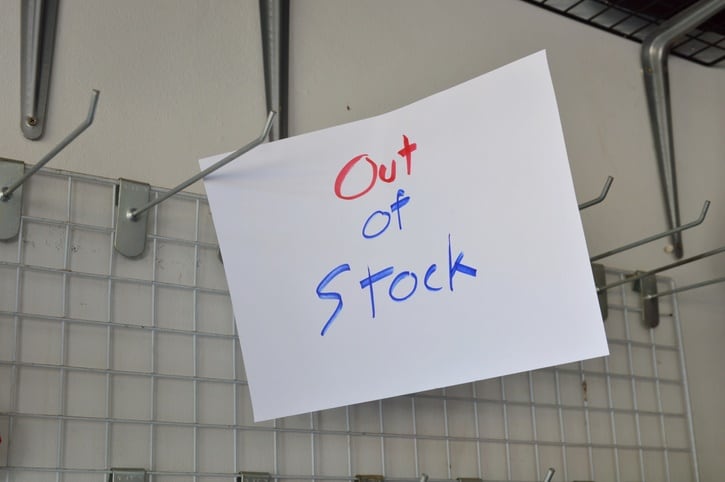“The battle to win customer loyalty and maximize customer lifetime value is fierce, and every store visit will move the retailer closer to victory or defeat. At each and every visit, ensuring a good customer experience is a must, and proper on-shelf availability is a critical lynchpin in delivering excellence,” IRI’s president of retail collaboration gateway solutions, Brad Shelton, and executive VP of supply chain and media solutions, Prakash Tilwani, explain in a new white paper published Jan. 8.
Unfortunately, most retailers are not consistently delivering this basic proposition, the two note.
“Consumers today encounter at least one out-of-stock item during one out of five trips to food, drug and mass merchandising stores,” underscoring that “out-of-stock situations continue to plague the CPG industry,” according to IRI.
To offset these challenges and try ensure full shelves, most retailers increase safety stock – a move that is expensive for them, ties up resources for manufacturers, and doesn’t necessarily solve the problem of out-of-stock situations, according to IRI.
Shelton and Tilwani explain that simply boosting stocks in the storeroom isn’t enough because insufficient in-store stocks is not the primary problem.
Rather, they explain, “the reasons for out-of-stocks are many,” but the most common is empty shelves, which accounts for 32% of out-of-stock situation, according to IRI. An additional 16% of the situations are due to consumers failing to find merchandise on store shelves – even with staff help.
Other common factors hindering consumer purchases are items blocked by other products, misplaced products, an incorrect or missing pricing tag and incorrect inventory count, according to IRI.
Stores traditionally have managed stocking through “extensive manual shelf audits,” but increasingly retailers are looking for solutions that will improve the in-store experience and use fewer resources, according to IRI.
IRI’s On Shelf Availability Optimizer could be a solution
And the consumer insight firm is happy to help with the launch of its new On-Shelf-Availability Optimizer, which “leverages big data, machine learning and artificial intelligence to flag items that should be selling but are not selling,” and identifying obsolete inventory counts that result in out-of-stocks, according to the paper.
Specifically, the optimizer pulls data from sales, inventory, shipments, causals, seasonality, planograms and other macro-economic indicators to pinpoint problems in the store and then alerts staff in near real time via hand held devices, according to IRI.
The result can generate significant savings, according to IRI which noted that a retailer that used the platform for several months was able to recapture an average of $68 in sales per alert. Given the system triggered about 10,000 alerts each day across this retailers 700 stores, this could quickly add up to tens of millions of dollars saved annually, IRI notes.
The savings are just the start though, adds IRI. It says the system also can help boost consumer loyalty by providing consumers the instant gratification they want.
It notes: “With shelves stocked accurately and appropriately, retailers are able to provide excellent customer experiences, building loyalty and, ultimately, lifetime customer value.”

